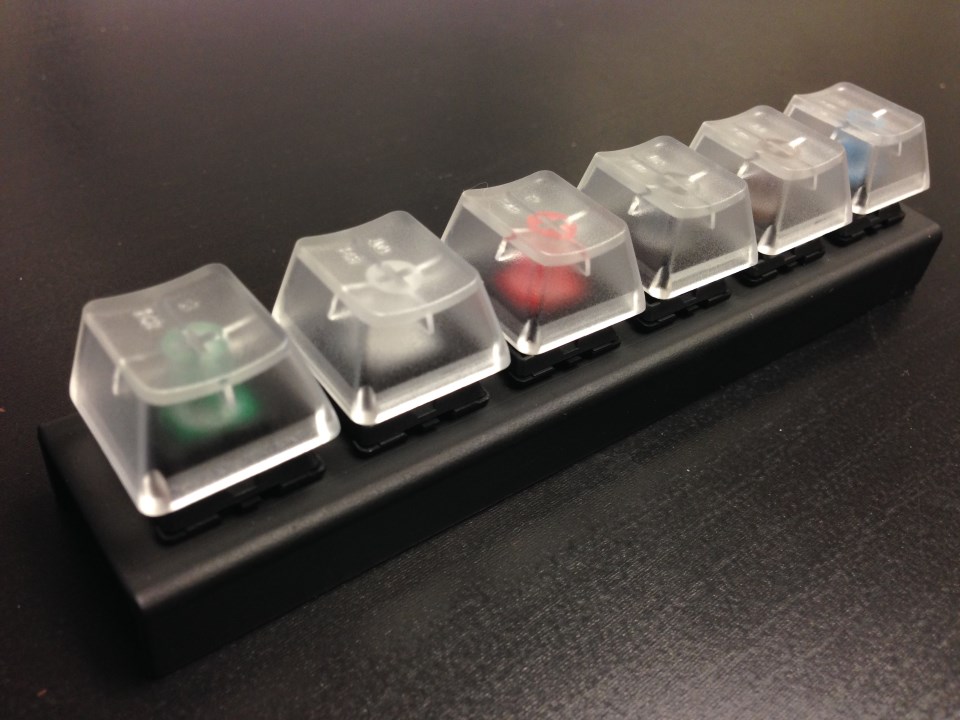A Case for Mechanical Keyboards
Lead-In
After many years of using various ergonomic keyboards both at work as well as home I finally had had enough. It was time to go back to good old mechanical switches. Having some free time and enough courage I researched and finally bought old-school mechanical keyboard.
The first step was to order a Cherry MX Switch Tester from WASD Keyboards.

6 Cherry MX Switches
The tester comes with 6 switches of which 4 are smooth (clear, red, black and brown) and 2 are actually clicky (blue, green). I didn’t like any of the smooth switches as they were all reminding me of a regular keyboard except a little more precise as each key has an individual switch (duh!).
I ended up liking Cherry MX Green best as it is more clicky and resitant than Cherry MX Blue. When you compare these two the difference is very clear: the green ones just feel more precise and even sturdy.
The Keyboard I chose
As Cherry MX Green was the best choice, I wanted to purchase magnificent CODE keyboard that has the best design – clean and simple, that simply allows you to focus on work & typing. It was out of stock! What was surprising is how rare the MX Green keyboards are! Only the CODE had a decent layout (i.e. not extra buttons/knobs and other pseudo-professional bells-n-whistles), but it was not available which was a huge disappointment.
The next best option was Cherry MX Blue-based Das Keyboard Model S ordered on Amazon during their Prime Day. So far so good: satisfying typing experience, the keyboard is a heavy, sits nicely on the desk and reminds me of heavy IBM keyboards from childhood. Overall build is good, it looks like a high-quality product except for the stupid functional keys that fortunately are mixed shared with functional keys.
Mechanical keyboards may not be for everyone, but software engineers should definitely give them a try for few weeks and see if they like them.